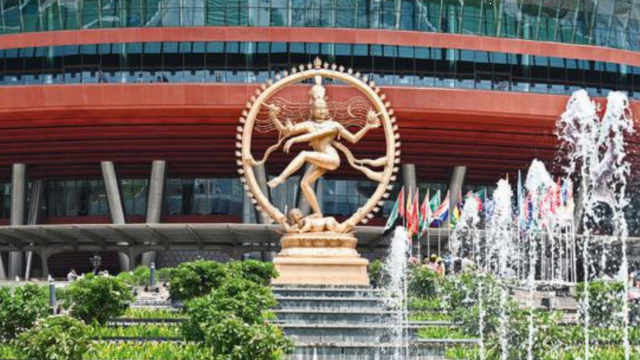Sculptures at Bharat Mandapam
India has unveiled two remarkable sculptures ahead of the G20 Summit, showcasing its rich cultural heritage and symbolism:
The Nataraja Sculpture
- Standing at 27 feet and weighing approximately 20 tonnes, this Nataraja sculpture was crafted by traditional Sthapatis of Swamimalai, specialists in Hindu temple architecture.
- It took around 3.25 lakh man-hours to create using the lost wax-casting process and adhering to the Silpa Shastra, ancient Hindu texts that guide sculpture and iconography.
- The sculpture is crafted using eight metals, known as “ashta dhatu,” each with its own symbolic meaning. The Chila tradition is a distinct style of sculpture that emerged in southern India in the 9th century. It reflects the region’s artistic and cultural heritage.
- The Nataraja sculpture represents Lord Shiva’s cosmic dance, symbolizing the omnipresent and infinite nature of divinity. It is a synthesis of religion, philosophy, art, craft, and science, deeply rooted in Hindu spirituality.
The Harappan Dancing Girl Replica
- Inside the venue, a life-sized bronze replica of the 4,500-year-old Harappan Dancing Girl sculpture has been displayed.
- This girl figure, discovered during Mohenjodaro excavations in 1926, represents the Sindhu-Saraswati Civilization.
- While the original stands at 10.5 cm, the replica is 5 ft tall and weighs 120 kg.
- The Harappan Dancing Girl represents the rich cultural history of the Sindhu-Saraswati Civilization.
- Its placement at the G20 Summit venue highlights India’s archaeological treasures and historical legacy.
Month: Current Affairs - September, 2023
Category: Art & Culture Current Affairs • India Nation & States Current Affairs








